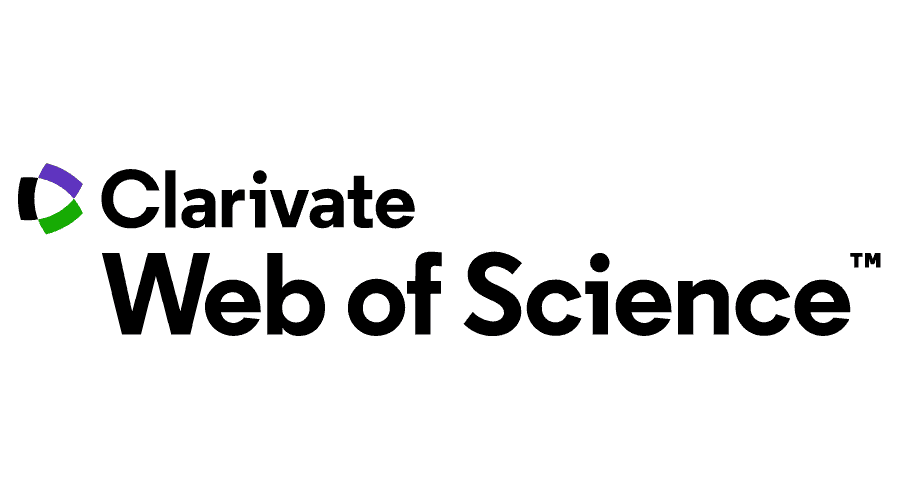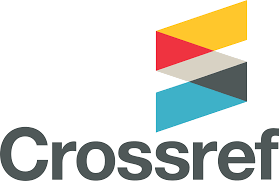Abstract
Research Aims: The primary aims of this study involve examining the effect of leadership styles on self-efficacy and the effect of self-efficacy on innovative work behaviour.
Design/Methodology/Approach: Quantitative research was conducted by collecting data from 242 randomly selected software developers in four software development companies in Yangon using structured questionnaires. Regression analysis was used to attain the research objectives.
Research Findings: The results showed that transactional and ambidextrous leadership styles have a significant effect on increasing the self-efficacy of software developers. This study also revealed that self-efficacy is an antecedent of the innovative work behaviour of software developers.
Theoretical Contribution/Originality: The study confirmed that transactional leadership significantly impacts self-efficacy and validated the role of ambidextrous leadership in self-efficacy. Moreover, self-efficacy was found to have an impact on innovative work behaviour.
Managerial Implication in the South East Asian Context: This study suggests that transactional and ambidextrous leadership styles can create enabling environments by encouraging and empowering team members to increase their self-efficacy and engage in more innovative endeavours.
Research Limitation & Implications: Data was collected once using a questionnaire from a sample of four companies. The insights can help leaders maintain a sustainable competitive advantage, leading to more job opportunities and long-term economic growth in Myanmar and other developing countries.
References
Agarwal, U. A. (2014). Linking justice, trust and innovative work behaviour to work engagement. Journal of Personnel Review, 43(1), 41–73.
Akram, T., Lei, S., & Haider, M, J. (2016). The impact of relational leadership on employee innovative work behaviour in IT industry of China. Arab Economic and Business Journal, 11(2), 153-161.
Azim, M. T., Fan, L., Uddin, M. A., Abdul Kader Jilani, M. M., & Begum, S. (2019). Linking transformational leadership with employees’ engagement in the creative process. Management Research Review, 42(7), 837-858.
Bandura, A. (1986). Social foundations of thought and action: A social cognitive theory. Englewood Cliffs NJ: Prentice- Hall.
Bandura, A. (1997). Self-efficacy: The exercise of control. New York: W.H. Freeman & Co.
Bass, B. M. (1985). Leadership and performance beyond expectations. New York: Free Press.
Bass, B. M. (1990). Bass & Stogdill’s handbook of leadership: Theory, research, and managerial applications (3rd ed.). New York: Free Press.
Bass, B. M. (1997). Does the transactional–transformational leadership paradigm transcend organizational boundaries? American Psychologist, 52(2), 130–139.
Bass, B., & Bass, R. (2008). The Bass handbook of leadership: Theory, research, and managerial applications. New York: Free Press.
Boerner, S., Eisenbeiss, S.A. & Griesser, D. (2007). Follower behaviour and organizational performance: the impact of transformational leaders. Journal of Leadership and Organisational Studies, 13(3), 15-26.
Chen, Y., Tang, G., Jin, J., Xie, Q., & Li, J. (2014). CEOs’ transformational leadership and product innovation performance: The roles of corporate entrepreneurship and technology orientation. Journal of Product Innovation Management, 4(31), 2–17.
Deng, G., Zhao, D., Lio, J., Chen, X., Ma, X., Liang, L., & Feng, C. (2019). Strategic elements of residency training in China: transactional leadership, self-efficacy, and employee-orientation culture. BMC Medical Education, 19(1), 1-8.
De Jong, J. P. J., & Den Hartog, D. N. (2007). How leaders influence employees’ innovative behaviour. European Journal of Innovation Management, 10(1), 41-64.
DeVellis, R. F. (2003). Scale development: theory and applications (2nd ed.). Newbury Park: Sage Publications.
Dörner, N. (2012). Innovative work behavior: The roles of employee expectations and effects on job performance. (Doctoral thesis, the University of St. Gallen, Germany). Retrieved from https://www1.unisg.ch/
Downey, J. P., & Kher, H. V. (2015). A longitudinal examination of the effects of computer self-efficacy growth on performance during technology training. Journal of Information Technology Education: Research, 14(1), 91-111.
Ei, K. H., & Kim, Y. S. (2016). Myanmar telecommunication progress in the last fifteen years and challenges. Asia pacific journal of business review, 1(1), 40-55.
Elidemir, S. N., Ozturen, A., & Bayighomog, S. W. (2020). Innovative behaviors, individual creativity, and sustainable competitive advantage: A moderated mediation. Sustainability, 12(1), 1-18.
García‐Morales, V. J., Lloréns‐Montes, F. J., & Verdú‐Jover, A. J. (2008). The effects of transformational leadership on organizational performance through knowledge and innovation. British journal of management, 19(4), 299-319.
Gojali, A. S., Rahmasuri, A., Selvi, E., Sayyidah, R. R., Faris, R. M., Kharisma, & Putra, B. R. (2021). The role of organizational culture in improving employee performance in the era of Globalization. Nusantara Science and Technology Proceedings, 4(4), 176-181.
Hegde, R., & Walia, G. (2014). How to enhance the creativity of software developers: A systematic literature. Retrieved from http://ksiresearchorg.ipage.com
Hughes, D. J., Lee, A., Tian, W., Newman, A., & Legood, A. (2018). Leadership, creativity, and innovation: A critical review and practical recommendations. The Leadership Quarterly, 29(1), 549-569.
Ibrahim, N., Ismail, A., Mat, N., & Erhan, T. (2023). Relationship between transformational leadership and employees’ creativity with psychological empowerment as mediator. The South East Asian Journal of Management, 17(2), 1-26.
Ing, L. Y., & Markus, I. (2023). ASEAN Digital Community 2040. ERIA Policy Brief. (2022-11). Retrieved from https://www.eria.org/
Janssen, O. (2000). Job demands, perceptions of effort-reward fairness, and innovative work behaviour. Journal of Occupational and Organizational Psychology, 73(3), 287-302.
Jansen, J. J. P., Tempelaar, M. P., Van den Bosch, F. A., & Volberda, H. W. (2009). Structural differentiation and ambidexterity: The mediating role of integration mechanisms. Organization science, 20(4), 797-811.
Jiang, Y., Asante, D., Zhang, J., & Ampaw, E. M. (2021). The influence of ambidextrous leadership on the employee innovative behaviour: an empirical study based on Chinese manufacturing enterprises. Current Psychology, 1(1), 1-17.
Kanapathipillai, K., Shaari, A., & Mahbob, N. (2021). The influence of self-efficacy on job performance of employees in the online retail sector in Malaysia: The mediating effect of innovative behaviour. European Journal of Human Resource Management Studies, 5(3), 85-111.
Kim, W. G., & Cha, Y. (2002). Antecedents and consequences of relationship quality in hotel industry. International Journal of Hospitality Management, 27(4), 321-338.
Kissi, J. (2012). Improving innovation and project performance in construction professional services firms: The leadership role of middle managers (Doctoral thesis, Loughborough University, Loughborough, United Kingdom). Retrieved from http://creativecommons.org
Liu, W., & Gumah, B. (2020). Leadership style and self-efficacy: The influences of feedback. Journal of Psychology in Africa, 30(4), 289-294.
Malik, A. (2013). Efficacy, hope, optimization, and resilience at workplace-positive organizational behavior. International Journal of Scientific and Research Publications, 3(10), 1-4.
Mehdinezhad, V., & Mansouri, M. (2016). School principals’ leadership behaviors and its relation with teachers’ sense of self-efficacy. International Journal of Instruction, 9(2), 1308-1470.
Mejia-Trejo, J., Sanchez-Gutierrez, J., & Ortiz-Barrera, M. (2013). Leadership and value creation: The case of the software developer sector in Guadalajara, México. Competition Forum, 11(1), 24-31.
Mittal, S., & Dhar, R., L. (2015). Transformational leadership and employee creativity Mediating role of creative self-efficacy and moderating role of knowledge sharing. Management decision, 53(5), 894-910.
Nunnally, J. C. (1978). Psychometric theory (2nd ed.). New York, NY: McGraw-Hill.
Podsakoff, P. M., MacKenzie, S. B., Moorman, R. H., & Fetter, R. (1990). Transformational leader behaviors and their effects on followers’ trust in leader, satisfaction, and organizational citizenship behaviors. The leadership quarterly, 1(2), 107-142.
Rost, J.C. (1997). Moving from individual to relationship: A post-industrial paradigm of leadership. Journal of Leadership & Organizational Studies, 4(1), 3-16.
Safarudin, A., Astuti, E. S., Raharjo, K., & Al Musadieq, M. (2015). The effect of transactional leadership style and work environment on computer self-efficacy, job satisfaction, behavior and performance of computer operator. European Journal of Business and Management, 7(14), 97-113.
Sahertian, P. & Soetjipto, B.E. (2011). Improving employee’s organizational commitment, self-efficacy, and organisational citizenship behaviour through the implementation of task-oriented and relationship- oriented leadership behaviour. The Business Review, 17 (2), 48–60.
Scott, S.G. & Bruce, R.A. (1994). Determinants of innovative behaviour: a path model of individual innovation in the workplace. Academy of Management Journal, 37(3), 580-607.
Sekaran, U., & Bougie, R. (2016). Research methods for business: A skill building approach. West Sussex: John Wiley & Sons.
Shrestha, N. (2021). Factor analysis as a tool for survey analysis. American Journal of Applied Mathematics and Statistics, 9(1), 4-11.
Sun, Y., Hu, X., & Ding, Y. (2019). Learning or relaxing: how do challenge stressors stimulate employee creativity? Sustainability, 11(6), 1779.
Tierney, P., & Farmer, S. M. (2002). Creative self-efficacy: its potential antecedents and relationship to creative performance. The Academy of Management Journal, 45(6), 1137-1148.
Tung, F. C. (2016). Does transformational, ambidextrous, transactional leadership promote employee creativity? Mediating effects of empowerment and promotion focus. International Journal of Manpower, 37(8), 1250-1263.
Turner, E. E., Rejeski, W. J., & Brawley, L. R. (1997). Psychological benefits of physical activity are influenced by the social environment. Journal of Sport and Exercise Psychology, 19(2), 119-130.
Tushman, M. L., & O’Reilly, C. A. (1996). Ambidextrous organizations: Managing evolutionary and revolutionary change. California Management Review, 38(4), 8-30.
Vera, D., & Crossan, M. (2004). Strategic leadership and organizational learning. Academy of Management Review, 29(2), 222-40.
Yamane, T. (1967). Statistics: An introductory analysis, (2nd ed.). New York: Harper and Row.
Yukl, G. A. (1999). An evaluative essay on current conceptions of effective leadership. European Journal of Work and Organizational Psychology, 8(1), 33–48.
Yukl, G. A., & Taber, T. (2002). A hierarchical taxonomy of leadership behaviour: Integrating a half century of behaviour research. Journal of Leadership & Organizational Studies, 9 (1), 15–32.
Yukl G. (2013). Leadership in organizations, (8th ed.). New Jersey: Prentice Hall Inc.
Yulianto, A., Sugiyo, S., Hadromi, H., & Qudus, N. (2021). The role of self-efficacy of Banten and Barombong shipping polytechnic education personnel in improving work performance. Review of International Geographical Education Online, 11(8), 996-1006.
Zacher, H., & Rosing, K. (2015). Ambidextrous leadership and team innovation. Leadership & Organization Development Journal, 36(1), 54 – 68.
Zahra, T. T., & Waheed, A. (2017). Influence of ethical leadership on innovative work behavior: Examination of individual-level psychological mediators. Pakistan Journal of Commerce and Social Sciences, 11(2), 448–470.
Recommended Citation
Kyaw, Win Moe Moe and Soe, Aye Thanda
(2024)
"Leadership Styles, Self-Efficacy, and Innovative Work Behaviour of Software Developers,"
The South East Asian Journal of Management: Vol. 18:
No.
1, Article 5.
DOI: 10.21002/seam.v18i1.1544
Available at:
https://scholarhub.ui.ac.id/seam/vol18/iss1/5
Included in
Business Administration, Management, and Operations Commons, Human Resources Management Commons












